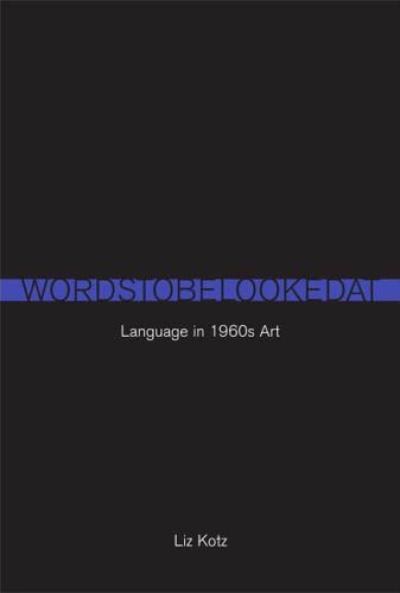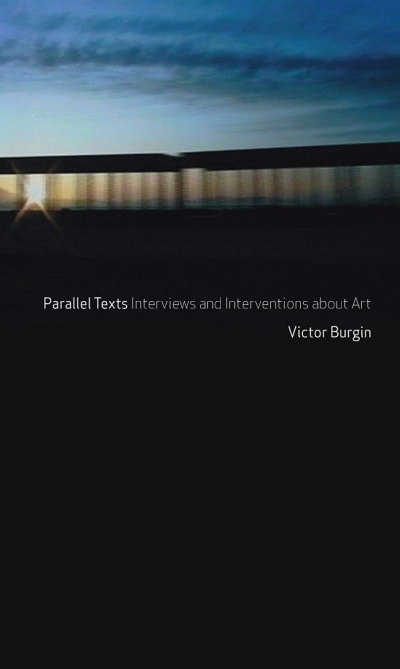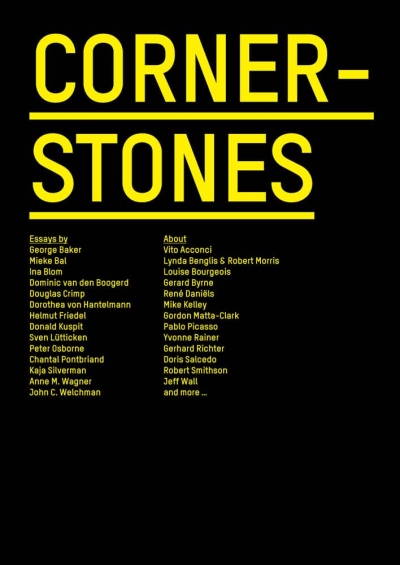gerade nicht auf Lager
N. Brenner, P. Marcuse, M. Mayer (Hg.)
Cities for People, Not for Profit. Critical Urban Theory…
gerade nicht auf Lager
Richard Dyer
In The Space Of A Song. The Uses of Song in Film
gerade nicht auf Lager
Andres Lepik (Hg.)
Moderators of Change. Architektur, die hilft
gerade nicht auf Lager
Bechir Kenzari (Hg.)
Architecture and Violence
gerade nicht auf Lager
Roger Thiel
Anarchitektur
gerade nicht auf Lager
Charles Jencks
The Story of Post-Modernism
gerade nicht auf Lager
Toru Hachiga (Hg.)
Creatives in Japan. Keywords to Know
gerade nicht auf Lager
Paul Hegarty, Martin Halliwell
Beyond and Before. Progressive Rock since the 1960s
gerade nicht auf Lager
Susanne Neubauer
Paul Thek Reproduced, 1969 - 1977
gerade nicht auf Lager
Nick Land
Fanged Noumena. Collected Writings 1987-2007
gerade nicht auf Lager
Raúl Zibechi
Territorien des Widerstands. Eine politische Kartografie…
gerade nicht auf Lager
Paul De Bruyne, Pascal Gielen
Community Art: The Politics of Trespassing
Victor Burgin
Parallel Texts. Interviews and Interventions about Art
gerade nicht auf Lager
Rem Koolhaas, Hans Ulrich Obrist (Hg.)
Project Japan. An Oral History of Metabolism
gerade nicht auf Lager
Florian Urban
Tower and Slab. Histories of Global Mass Housing
gerade nicht auf Lager
Marit Paasche, Judy Radul (Hg.)
A Thousand Eyes. Media Technology, Law, and Aesthetics
gerade nicht auf Lager
Wolfgang Sonne (Hg.)
Die Medien der Architektur
gerade nicht auf Lager
Museum für Gestaltung Zürich (Hg.)
Poster Collection 23. In Series
gerade nicht auf Lager
Andrea Cornwall (Hg.)
The Participation Reader
gerade nicht auf Lager
Franco "Bifo" Berardi
After the Future
gerade nicht auf Lager
51N4E
Double or Nothing
gerade nicht auf Lager
Thomas Meinecke
Lookalikes
gerade nicht auf Lager
Moritz Baßler, Robin Curtis, et al. (Hg…
Kultur und Kritik (Heft 1, Herbst 2012) POP
gerade nicht auf Lager
Simon Rothöhler
Amateur der Weltgeschichte. Historiographische Praktiken im…
gerade nicht auf Lager
Gregor Eichinger, Eberhard Tröger
Touch Me! Das Geheimnis der Oberfläche
Juan A. Gaitán, Nicolaus Schafhausen,…
Cornerstones
gerade nicht auf Lager
Gestalten (Hg.)
Visual Storytelling. Inspiring a New Visual Language
gerade nicht auf Lager
Christian Marazzi
Capital and Affects. The Politics of the Language Economy
gerade nicht auf Lager
Hal Foster
The Art-Architecture Complex
gerade nicht auf Lager
Thomas Hirschhorn
Establishing a Critical Corpus
gerade nicht auf Lager
Andrej Holm, Klaus Lederer, Matthias…
Linke Metropolenpolitik. Erfahrungen und Perspektiven am…
gerade nicht auf Lager
Lars Spuybroek
The Sympathy of Things
gerade nicht auf Lager
Jarett Kobek
Atta (Semiotext(e) / Intervention)
gerade nicht auf Lager
A. Moravánszky, J. Hopfengärtner (Hg.)
Aldo Rossi und die Schweiz. Architektonische…
gerade nicht auf Lager
metroZones (Hg.)
Urban Prayers – Neue religiöse Bewegungen in der globalen…
gerade nicht auf Lager
Marta Herford, Markus Richter (Hg.)
Wir sind alle Astronauten. Richard Buckminster Fuller
gerade nicht auf Lager
Jürgen Teller
Touch Me
gerade nicht auf Lager
Lukas Feireiss,Ole Bouman
Testify! The Consequences of Architecture
gerade nicht auf Lager
Marie J. Aquilino
Beyond Shelter. Architecture for Crisis
gerade nicht auf Lager
El Croquis 156
Valerio Olgiati 1996-2011
gerade nicht auf Lager
Pier Vittorio Aureli
The Possibility of an Absolute Architecture
gerade nicht auf Lager
Mieke Gerritzen, Geert Lovink, Minke…
I Read Where I Am. Exploring New Information Cultures
gerade nicht auf Lager
Matt Mullican
Notating the Cosmology 1973-2008
gerade nicht auf Lager
Arno Brandlhuber, Silvan Linden (Hg.)
Disko 20-25 Architektur ohne Architektur
gerade nicht auf Lager
Craig Buckley, Jean-Louis Violeau (Hg.)
Utopie. Texts and Projects, 1967–1978
gerade nicht auf Lager
Jürgen Krusche, Günther Vogt
Strassenräume in Berlin, Shanghai, Tokyo, Zürich. Eine foto…
gerade nicht auf Lager
David Ake
Source. Music of the Avant-garde, 1966 - 1973
gerade nicht auf Lager
Murray Grigor
Infinite Space. Der Architekt John Launter. DVD
gerade nicht auf Lager
Yona Friedman
Architecture with the People, by the People
gerade nicht auf Lager
Lars Lerup
One Million Acres & No Zoning
gerade nicht auf Lager
M, Kelley, J. Shaw, Niagara, C, Loren
Destroy All Monsters Magazine 1976-1979
gerade nicht auf Lager
M. Hlavajova, S. Sheikh, J. Winder (Hg.)
On Horizons. A Critical Reader in Contemporary Art
gerade nicht auf Lager
Michael Sorkin
All Over the Map. Writing on Buildings and Cities
gerade nicht auf Lager
Nadine Barth (Hg.)
German Fashion Design 1946-2012
gerade nicht auf Lager
Simon Reynolds
Retromania. Pop Culture's Addiction to its Own Past
gerade nicht auf Lager
Stan Allen, Marc McQuade (Hg.)
Landform Building
gerade nicht auf Lager
Fredric Jameson
Representing Capital. A Reading of Volume One
gerade nicht auf Lager
Magdalena Taube, Krystian Woznicki (Hg.)
Modell Autodidakt
gerade nicht auf Lager
McKenzie Wark
The Beach Beneath the Street. The Everyday Life and…
gerade nicht auf Lager
Pedro Barateiro, Ricardo Valentim (Hg.)
Activity (is to a group what content is to platform)
gerade nicht auf Lager
El Croquis 155
Sanaa 2008-2011
gerade nicht auf Lager
Laurie Anderson, Trisha Brown, Gordon…
Pioneers of the Downtown Scene
gerade nicht auf Lager
Curtis, Rees, White, Ball (Hg.)
Expanded Cinema. Art, Performance, Film
gerade nicht auf Lager
Kaminer, Robles-Dúran, Sohn (Hg.)
Urban Asymmetries
gerade nicht auf Lager
Abel, Evers, Klaasen, Troxler (Hg.)
Open Design Now. (why design cannot remain exclusive)
gerade nicht auf Lager
AA Bronson, Peter Hobbs
Queer Spirits
gerade nicht auf Lager
A. Avanessian, L. Skrebowski (Hg.)
Contemporary Art and Aesthetics
gerade nicht auf Lager
2G N. 57
Njiric+ Architekti
gerade nicht auf Lager
Lucia Nagib
World Cinema and the Ethics of Realism
gerade nicht auf Lager
Huda Smitshuijzen, Abi Fares (Hg.)
Typographic Matchmaking in the City
gerade nicht auf Lager
H. F. Mallgrave, D. Goodman
An Introduction to Architectural Theory. 1968 to the Present
gerade nicht auf Lager
Alexander Bolton
Alexander McQueen. Savage Beauty
gerade nicht auf Lager
Professur Theorie und Geschichte der…
Architecture in the Age of Empire / Architektur der neuen…
gerade nicht auf Lager
Garth A. Myers
African Cities. Alternative Visions of Urban Theory and…
gerade nicht auf Lager
Jean-Louis Cohen
Architecture in Uniform. Designing and Building for the 2nd…
gerade nicht auf Lager
Christopher Dell
Replaycity. Improvisation als urbane Praxis
Byung-Chul Han
Shanzhai. Dekonstruktion auf Chinesisch
gerade nicht auf Lager
Kaoru Takahashi (Hg.)
Hello! UK Graphics. Graphic Design in the UK since the 1980s
gerade nicht auf Lager
Josep Lluís Mateo
After Crisis. Contemporary Architectural Conditions
gerade nicht auf Lager
Louis Luthi
On the Self-reflexive Page
gerade nicht auf Lager
O.M. Ungers
Morphologie City Metaphors
gerade nicht auf Lager
Lisa Taylor & Gardeners of Seattle…
Your Farm in the City
gerade nicht auf Lager
Hassenpflug, Giersig, Stratmann
Reading the City. Stadt lesen
gerade nicht auf Lager
Butler, Habermas, Taylor, West
The Power of Religion in the Public Sphere
gerade nicht auf Lager
Richard Fairfield
The Modern Utopian. Alternative Communities of the 60s and…
gerade nicht auf Lager
Jochen Rädeker, Kirsten Dietz
Reporting. Unternehmenskommunikation als Imageträger
gerade nicht auf Lager
Lorey, Nigro, Raunig (Hg.)
Inventionen 1. Gemeinsam. Prekär. Potentia. Dis-/Konjunktion
gerade nicht auf Lager
Jimini Hignett
The Detroit Diary
gerade nicht auf Lager
Klanten, Mollard, Hübner (Hg.)
Behind the Zines. Self-Publishing Culture
gerade nicht auf Lager
Tom Holert
Civic City Cahier 3. Distributed Agency, Design’s…
gerade nicht auf Lager
Paul Van Beek, Charles Vermaas
Landscapology. Learning to Landscape the City
gerade nicht auf Lager
Jan Ole Arps
Frühschicht. Linke Fabrikintervention in den 70er Jahren
gerade nicht auf Lager
Gunter Reski, Marcus Weber (Hg.)
Captain Pamphile. Ein Bildroman
gerade nicht auf Lager
Amy Allen (Hg.)
Democracy in What State?
gerade nicht auf Lager
D. Hauptmann, W. Neidich (Hg.)
Cognitive Architecture. From Biopolitics to NooPolitics
gerade nicht auf Lager
Stefan Sagmeister
Sagmeister: Another Book about Promotion and Sales Material
gerade nicht auf Lager
Enzo Mari
The Intellectual Work. Sixty Paperweights
Bettina Allamoda
Catwalk to History - A Sourcebook


































































































